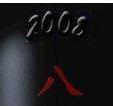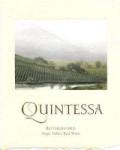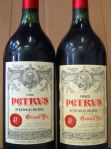Nan no onore ga
Sakura kana
Without flowing wine, what good to me
are lovely cherry trees in bloom? – 17th century Haiku
The world economy has lately been in down turn mode, and the laws of supply and demand dictate that as demand for premium wine drops, the prices would follow. As I look at many varied sources for wine buying, I am struck at how seemingly untrue this premise is. Currently, the prices for top tier wines are pretty much back to their high 2007 level, and the futures costs on 2009 French Bordeaux are through the roof, despite the fact that more consumers in the United Kingdom and across the U.S.A. are opting out of buying wines from this stellar vintage. Oddly enough, the pricing for quality wines that fall below the “cult status” wines have in fact dropped, sometimes significantly. There is a disparity in pricing for upper echelon wines when compared to wine at all other price points. This phenomenon is not limited to Bordeaux. It is being seen with premium wines from Burgundy, Italy, California, Australia, Chile, and across all the major wine producing regions of the world. How can this be? Why shouldn’t wine prices drop as with any other item that can be sold on the open market? The answer is found in the Asian effect.
Many wine exporting nations have been seeking out new markets for their premium products; a strategy that targets countries where wine consumption is a relatively new phenomenon. The countries in Asia (predominantly comprising China, Taiwan, Japan, Thailand, Vietnam, Indonesia, Korea and Singapore) comprise more than two billion people. This new marketing campaign which has been targeting these countries over the past ten years is working with tremendous success.
Part of their success has been in the negociant’s ability to eliminate the 40-80% duty previously applied to all wine and liquor sold in China and Hong Kong. It has been said that the Chinese are in the midst of a love affair with Bordeaux. French Bordeaux currently sells more than any other style of wine in China, and there is a reason for this. Nicholas Pegna of Berry Bros. and Rudd – Hong Kong says, “Bordeaux has been very effective in establishing itself as the wine of prestige over the past twenty years, and it follows that China, as a relatively new market, would look at Bordeaux first. Bordeaux is easier to understand; there are only two variables, Châteaux and vintage.”
In order to further understand this, there are some cultural factors to consider. The primary way wine is enjoyed (unless you are North Korea’s Kim Jong Il, who drinks a bottle of first growth Bordeaux with every dinner) in China is during business functions, and celebrations. The most popular celebrations include weddings, birthdays, the Chinese New Year, and the Mid-Autumn festival.
There is an element in Asian society of extreme giving so that one may not “lose face” before one’s peers. “Face” is idiomatically a function of dignity and prestige, although some have said the concept of “face” cannot be completely translated or understood in a western culture. Huang Shuanfan, in the Journal of Chinese Linguistics, defines “face” as,” … a sense of worth that comes from knowing one’s status, and reflects concern with the congruency between one’s performance or appearance and one’s real worth.” Brown and Levinson further describe “face” as, “… something that is emotionally invested, and that can be lost, maintained, or enhanced, and must be constantly attended to in interaction. In general, people cooperate (and assume each other’s cooperation) in maintaining face in interaction, such cooperation being based on the mutual vulnerability of face.” What this means is that no expense is spared when trying to impress the boss, or the bridegroom’s parents or whomever. This often translates into giving a gift that is at an unreasonable or non-commensurate level. It is difficult to exactly understand this, but it is kind of like getting invited to the wedding of a child of someone you work with, and giving a new car as a gift to that child. The salary structure is different in China, but often that wedding gift is a bottle of Châteaux Lafite-Rothchild.
I bring up Lafite specifically because this wine has a particularly memorable Asian success story. In China, Châteaux Lafite is considered first among firsts. Prices for this wine have surged so much that it skews the figures encompassing all of the first growth Bordeaux’s. There are many reasons for this; the name “Lafite” is easy to pronounce to a native Chinese speaker, and it has a known value the world over. Since the purchase of a $1,000 bottle in China is typically not for one’s own consumption, but rather for gifting, brand recognition is paramount. An interesting parallel to this relates to Kentucky Fried Chicken. KFC is extremely popular in China (I have eaten at the KFC just off Tiananmen Square in Beijing.) Early on, however, the brand got a slow start due to translation errors. Their slogan “finger lickin’ good” was translated as “so good it makes you bite your fingers off”. Their prospects initially didn’t look so bright! Many wine labels are difficult to translate into Chinese, and therefore a new label with an auspicious interpretation and slightly different meaning in Chinese is added.
For example, Château Beychevelle is an extremely popular Bordeaux with a picture of a Viking ship on the label. In China this wine is called “Longchuan, or “dragon boat”. This is interpreted as a lucky symbol, and serves to further enhance the desirability of the wine.
Moreover, 2008 was not a stellar vintage of any of the French Bordeaux. Châteaux Lafite, in a brilliant marketing move, actually placed the Chinese character for the number “8”, which is a very auspicious number in China, front and center on their bottle label. The result was the selling out of all of the bottles of Lafite from a vintage that promised to be difficult to sell.
It begs the question, how are American wines comparing to the French, in regards to the Asian markets? Last year the value of U.S. wine exports to primarily China and Japan jumped 138% (around $100 million). This represents around 8% of the roughly one billion dollars in wine exports to Asian countries. The bulk of the exports are top tier Napa Valley Cabernet (more than 95%), but, due to a strong marketing campaign, wines from Washington and Oregon also grew five fold last year in exports to Asia.
China’s new appreciation of foreign wine also reflects “a nouveau riche mentality that the most expensive must be the best” that is prevalent in China’s booming economy, says Wu Jianxin, owner of the Beijing private wine club QingPing HuiGuan. “People ask me, ‘What’s the most expensive wine you have?’ “I’ll say Quintessa, about 2,500 Yuan ($366). They’ll say, ‘That’s not expensive enough.'” This statement is incredible to me when one considers that the average salary in China is $356 per month. Of course, that wage number has really nothing to do with the staggering new affluence currently found in China.
So why am I even talking about this Asian conundrum, and how does it affect wine buyers in the US? After all, most of us don’t make it a habit to buy pricey first growth Bordeaux wines. For starters, it is not just the French Claret that Asian wine buyers are after. All of the top end California wines are now on the radar across the Pacific. This obviously has the potential to increase the costs of wine when there are two billion relatively new wine drinkers looking for something great. I actually see both the good and the bad in this development. Some bad points include the obvious increase in prices for the top collectible wines. This has the potential to pull upward pricing for wine near the top and in budget for many US wine drinkers. It is never good to increase the price of a wine simply for the sake of selling a more expensive product.
In addition, there has already been a surge for counterfeit wines. It isn’t too difficult to make up a new label, especially in a non-western language country, and slap it on any old bottle of wine that says whatever the counterfeiter wants it to say. As for the good, many wineries have taken it on the chin with the current economic climate and are really in trouble. Increased demand helps the industry as a whole to remain financially viable. Also, there are more wineries that want to get a piece of the Asian action, and quality in general will inevitably increase. In addition, there are not many wines to speak of that come from Asian countries. No doubt, within a few years we will all be sampling new Asian flared, treasures from the grape that are already being produced. I have a love of the Orient. I lived there for a time, met my wife over there, and am confident that within this new market for wine, the positive will greatly over shadow the negative. That is all for now.
Cheers,
Karl









Which one is the real Petrus in the picture? You haven’t said in the article
Email me! 😀
I didn’t take the photo, but I think the one on the left is the fake